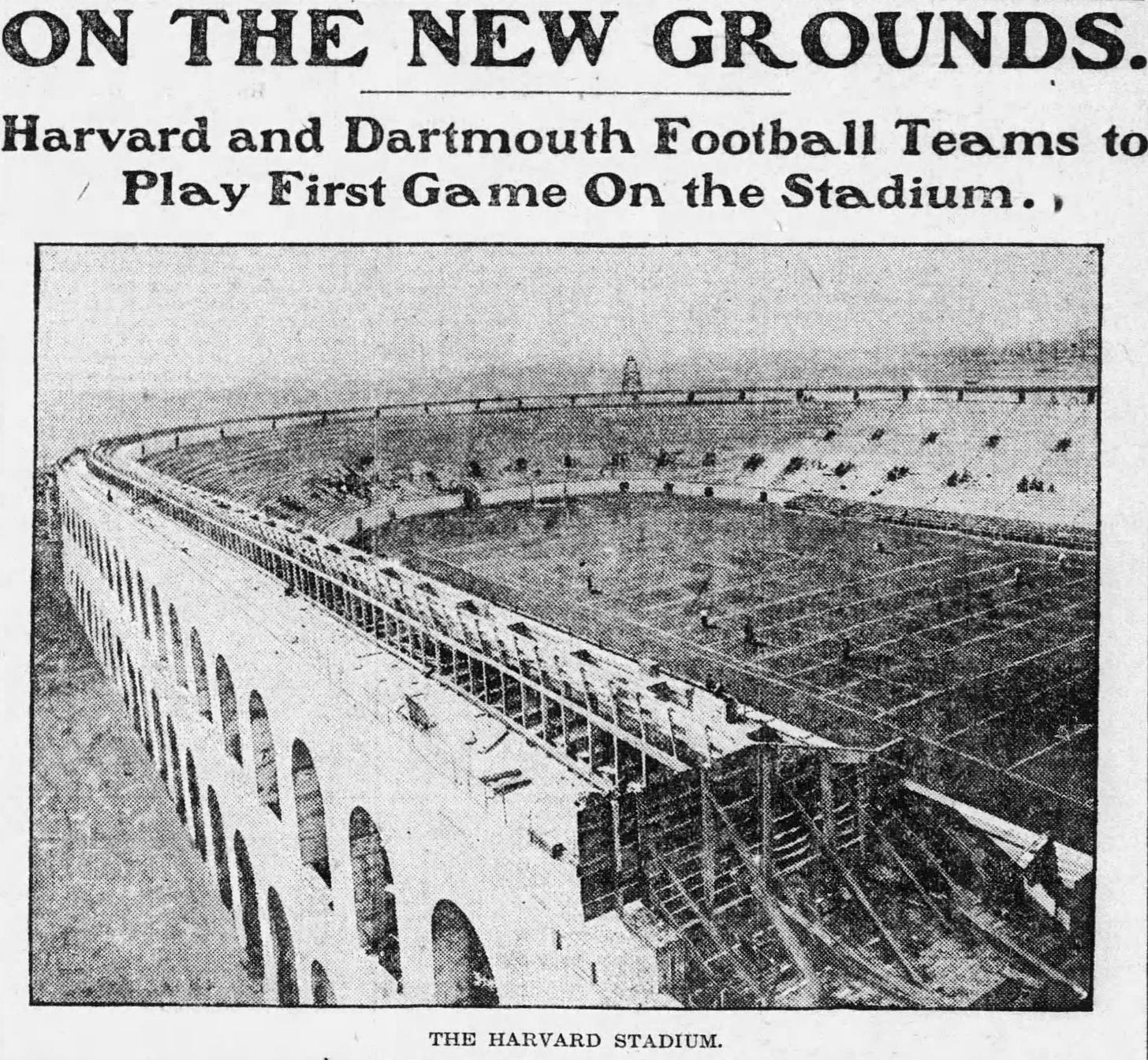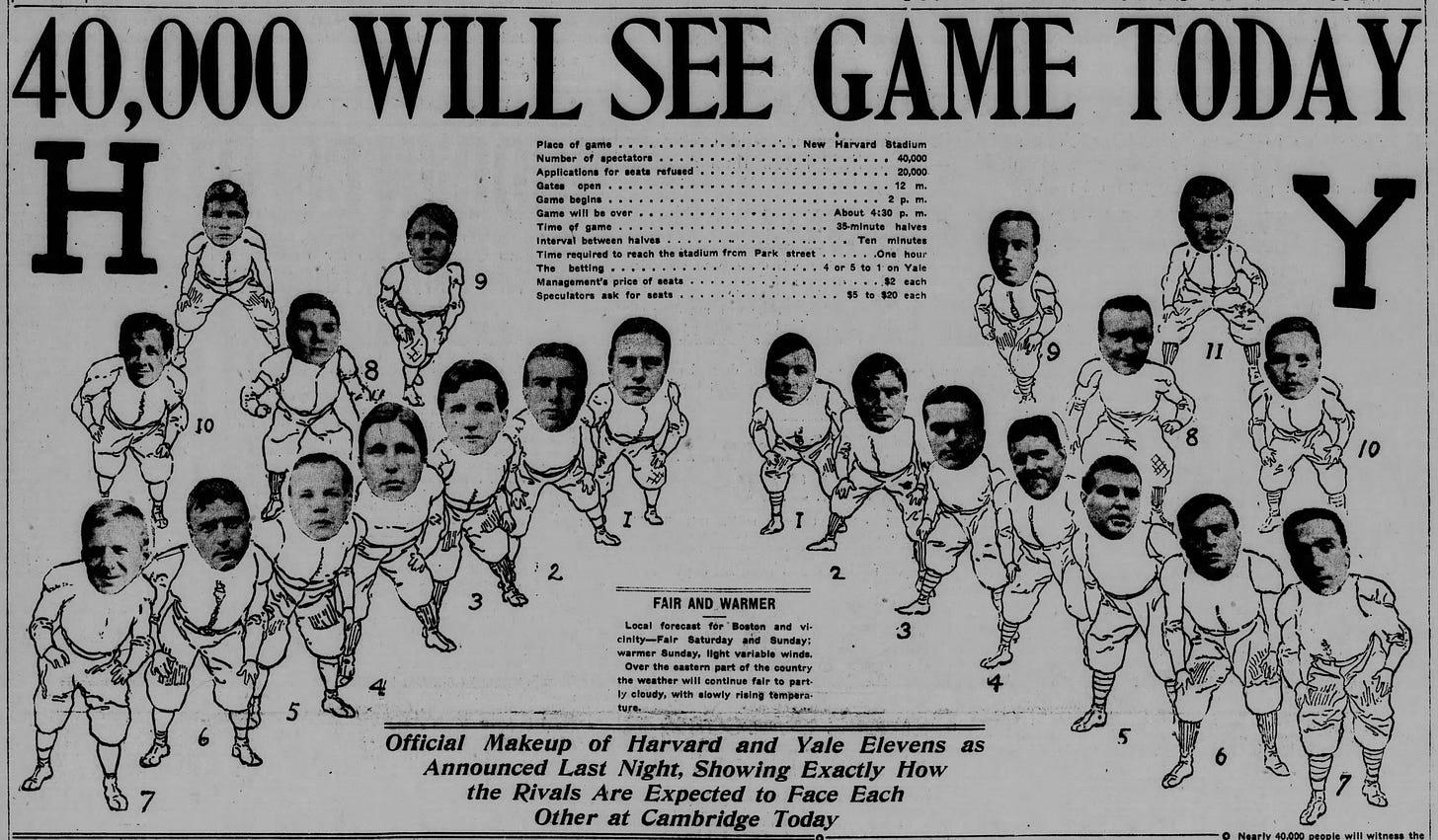Today's Tidbit... Building and Opening Harvard Stadium
During the summer and fall of 1903, construction workers in the Boston area busily mixed more than 90,000 bags of cement to form slabs that would become Harvard Stadium. Built on the site of Harvard's baseball field, construction began on June 22, 1903, following the last home baseball game of the 1903 season.
Harvard played eight home football games in their old stadium as the new one rose beyond one goal line. They also played away games at West Point and Penn.

Rather than try to complete the stadium before winter, the 450 to 700 construction workers on the scene each day stopped building and readied the stadium for Harvard's final games with Dartmouth and Yale. They still needed to pour 600 of the 4,860 concrete seating slabs, build the towers at each end of the U-shaped stadium, and complete the upper promenade, but 500 tons of steel and 31 rows of seats were in place in most locations. Temporary seating stood on the promenade, and the site was cleaned up and made safe for the coming games.

In addition to the interest generated among football fans, those in the construction industry worldwide monitored the stadium's progress since it was the world's first sizable steel-reinforced concrete structure.
In building the stadium there was no precedent to go by. It was all an entirely new application of concrete construction and the progress was watched by builders, contractors, and engineers everywhere.
'On The New Grounds,' Boston Globe, November 14, 1903.
Harvard was 9-1 following the Penn game and practiced in the new stadium for the first time on the Wednesday preceding the stadium's opening game against Dartmouth. Next to the reports of the practice was an article concerning another technological marvel, indicating that a Brit, C. S. Rolls, had set a world automobile speed record for one kilometer, averaging 83.75 MPH. The following year, Mr. Rolls was introduced to his future partner, Mr. Royce, leading them to produce automobiles for Harvard future grads.
Things did not go well for Harvard against Dartmouth in the first game at Harvard Stadium, as a crowd of 15,000 watched them lose 15-0. Of course, none of that mattered as long as they beat Yale the following week. Yale stood at 10-1 after losing to Princeton, while Harvard fell to Dartmouth.
The excitement in Beantown was palpable as Harvard and Yale fans anticipated the largest crowd ever to see a football game on a college campus.
Among those in the Boston area that day, and presumably attending the game, was an individual from France whose postcard home showed an image of the 1901 Harvard-Yale game, which Harvard won 11-10 to claim a national title. Perhaps unimpressed with the game itself, their comments appear to say:
Many people go by car and they have automobiles for hire.
Boston 21 Nov 03. Tour even has a similar "game" at Harvard.
Someone who better understands the 1903 version of French may interpret things differently, but having automobiles for hire was a new phenomenon since automobiles were also new. Nevertheless, the writer seemed unimpressed with all the commotion on the gridiron, and neither were most Harvard fans.
Although the Crimson played reasonably well against a strong Yale team, the Bulldogs earned a 16-10 victory, forcing Harvard to wait until September 1904 to notch their first victory in their glorious new stadium when they topped Williams 24-0.
Football Archaeology is reader-supported. Click here to buy one of my books or otherwise support the site.





I can't make out all the handwriting on the postcard, but the bottom might read "Jour même", or "Same day".
One of the great things about sitting there is that it is similar enough today that you can imagine the old days